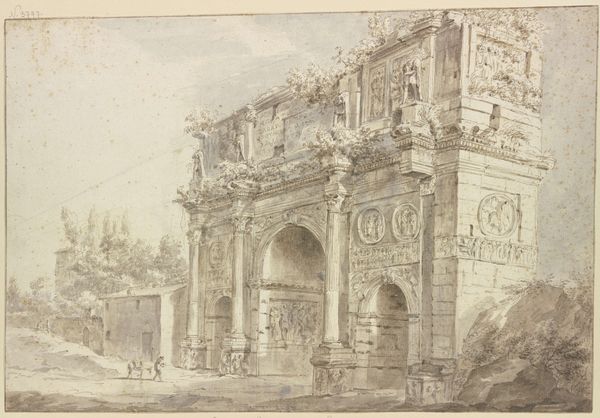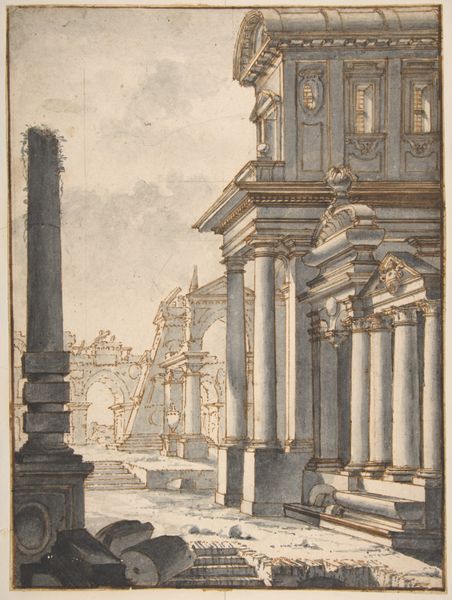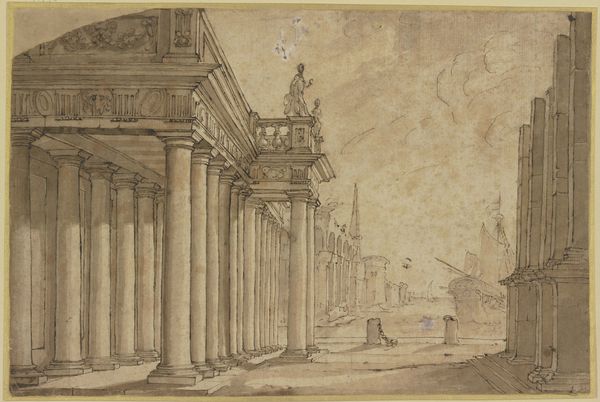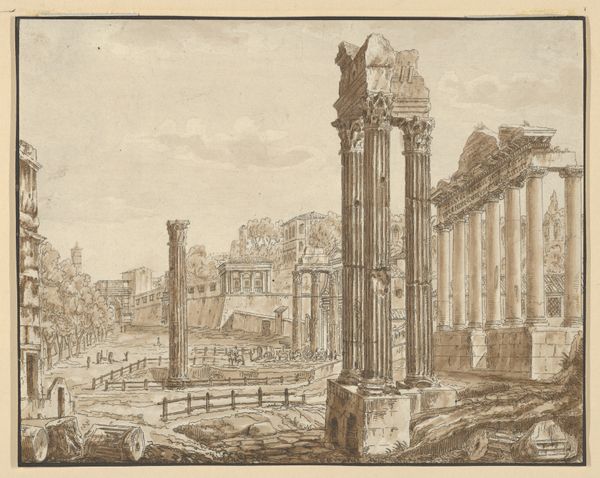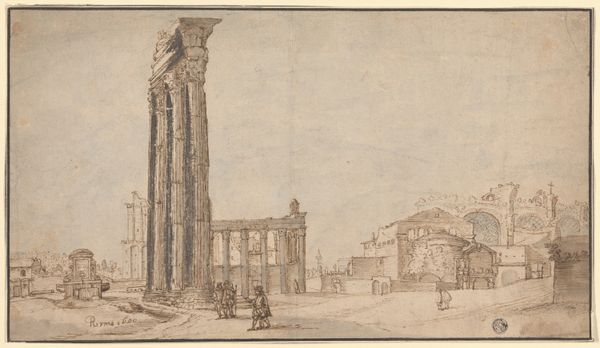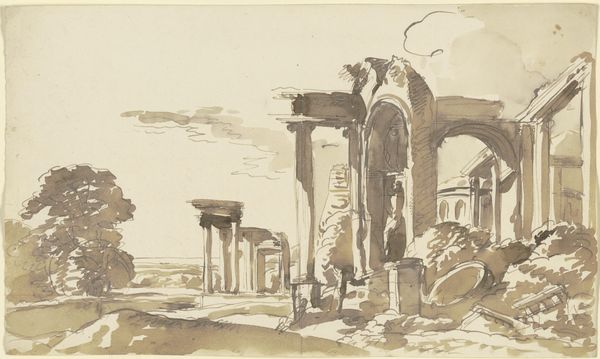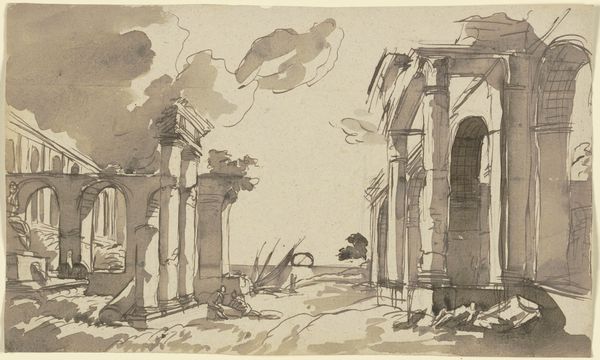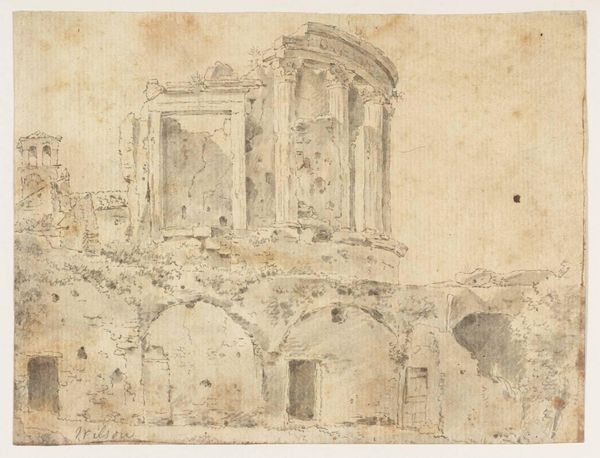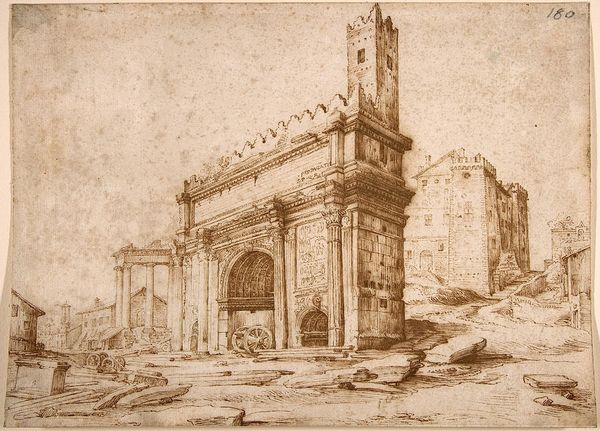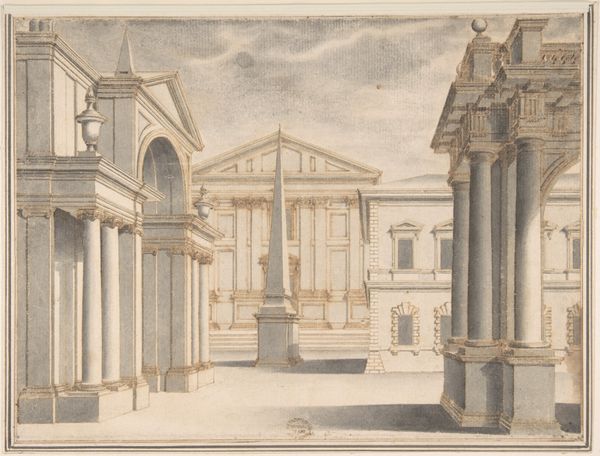
drawing, etching, watercolor, architecture
#
drawing
#
baroque
#
etching
#
watercolor
#
cityscape
#
watercolour illustration
#
architecture
Dimensions: height 99 mm, width 159 mm
Copyright: Rijks Museum: Open Domain
Jacob van der Ulft made this pen and brown ink drawing of Roman ruins in the Netherlands sometime in the 17th century. It evokes the grandeur of a bygone era. During this period, the Dutch Republic, buoyed by its Golden Age, looked to classical antiquity for inspiration, seeking to legitimize its burgeoning cultural and political identity through association with the Roman Empire. Van der Ulft, like many of his contemporaries, never actually visited Rome. He instead relied on prints and descriptions to construct his images of Italy. His interest was not topographical accuracy, but the evocation of a shared cultural heritage. The ruins signify both the glory and the transience of civilizations, a theme resonant with the Dutch Republic's own ambitions and anxieties. The presence of contemporary figures amidst the ruins underscores this dialogue between past and present. To fully understand the drawing's significance, one must explore the broader context of Dutch Golden Age art and its relationship to classical antiquity through period literature, travelogues, and architectural treatises.
Comments
No comments
Be the first to comment and join the conversation on the ultimate creative platform.
